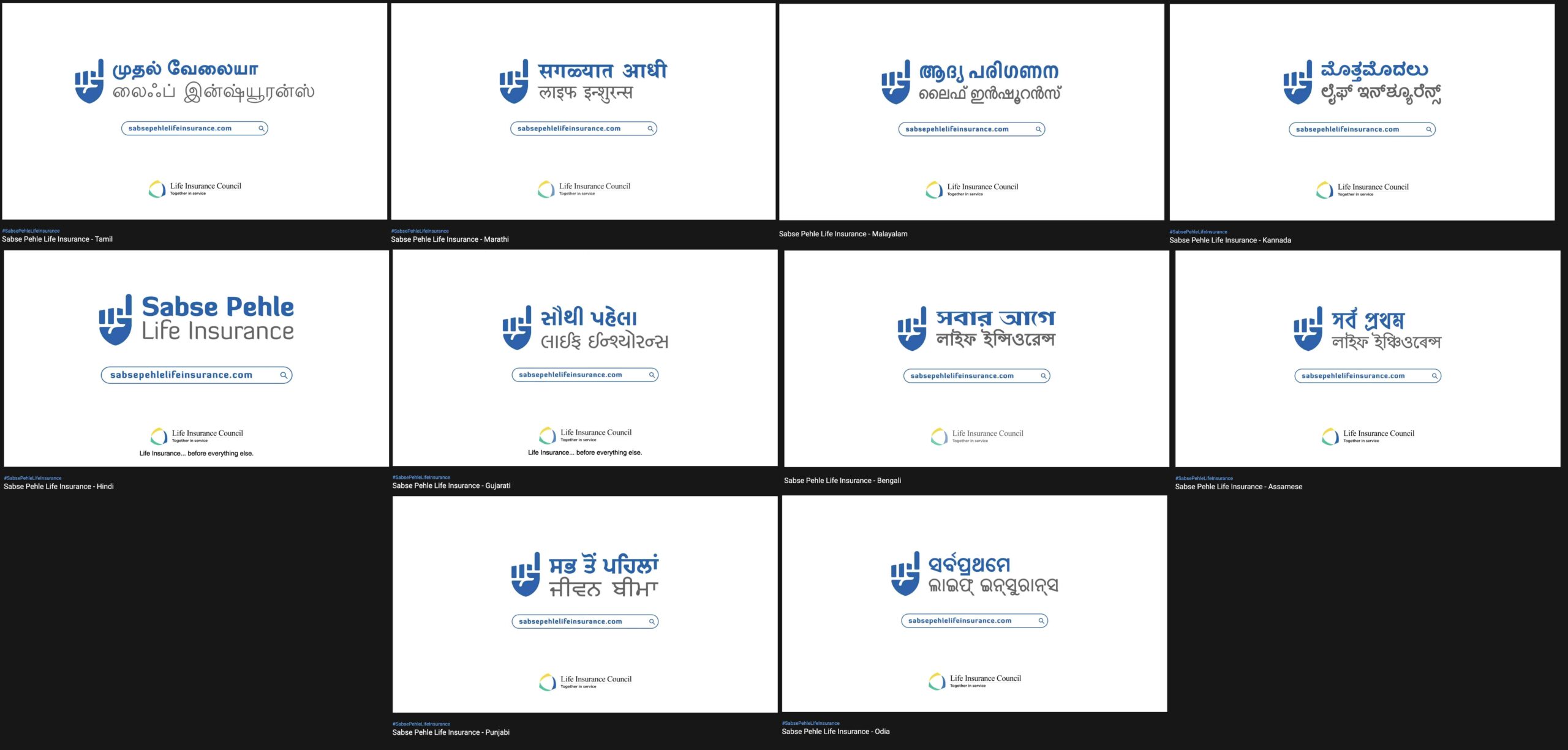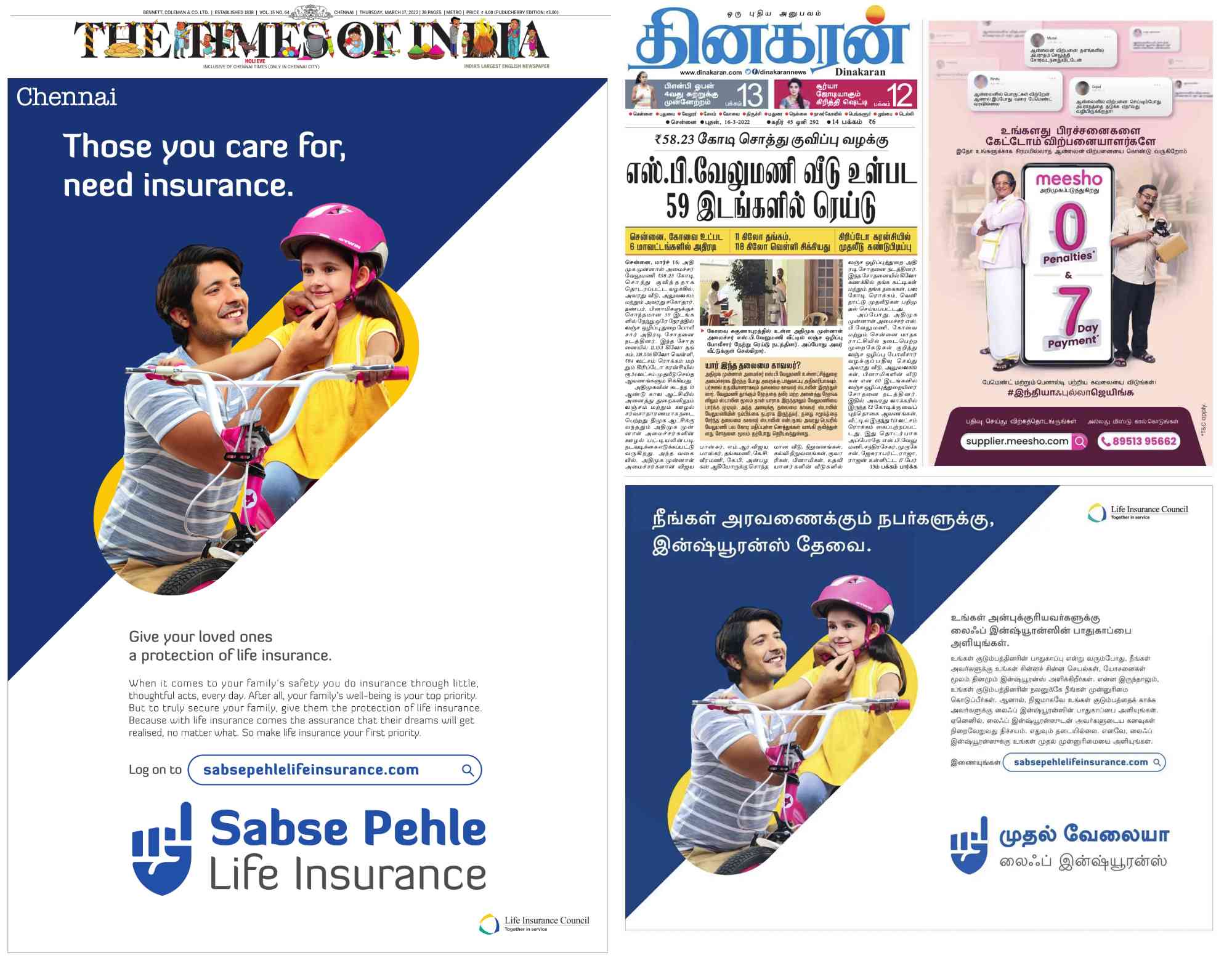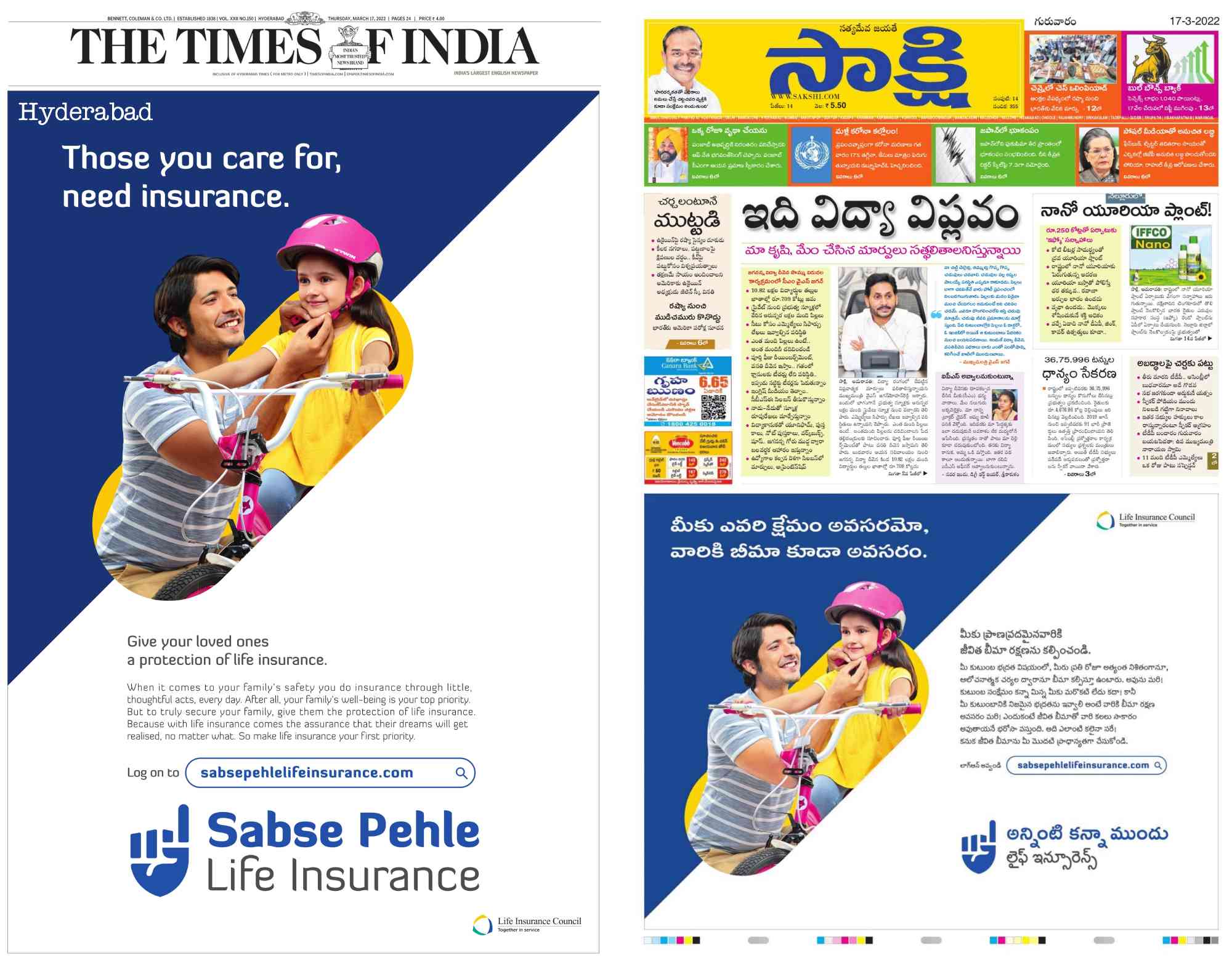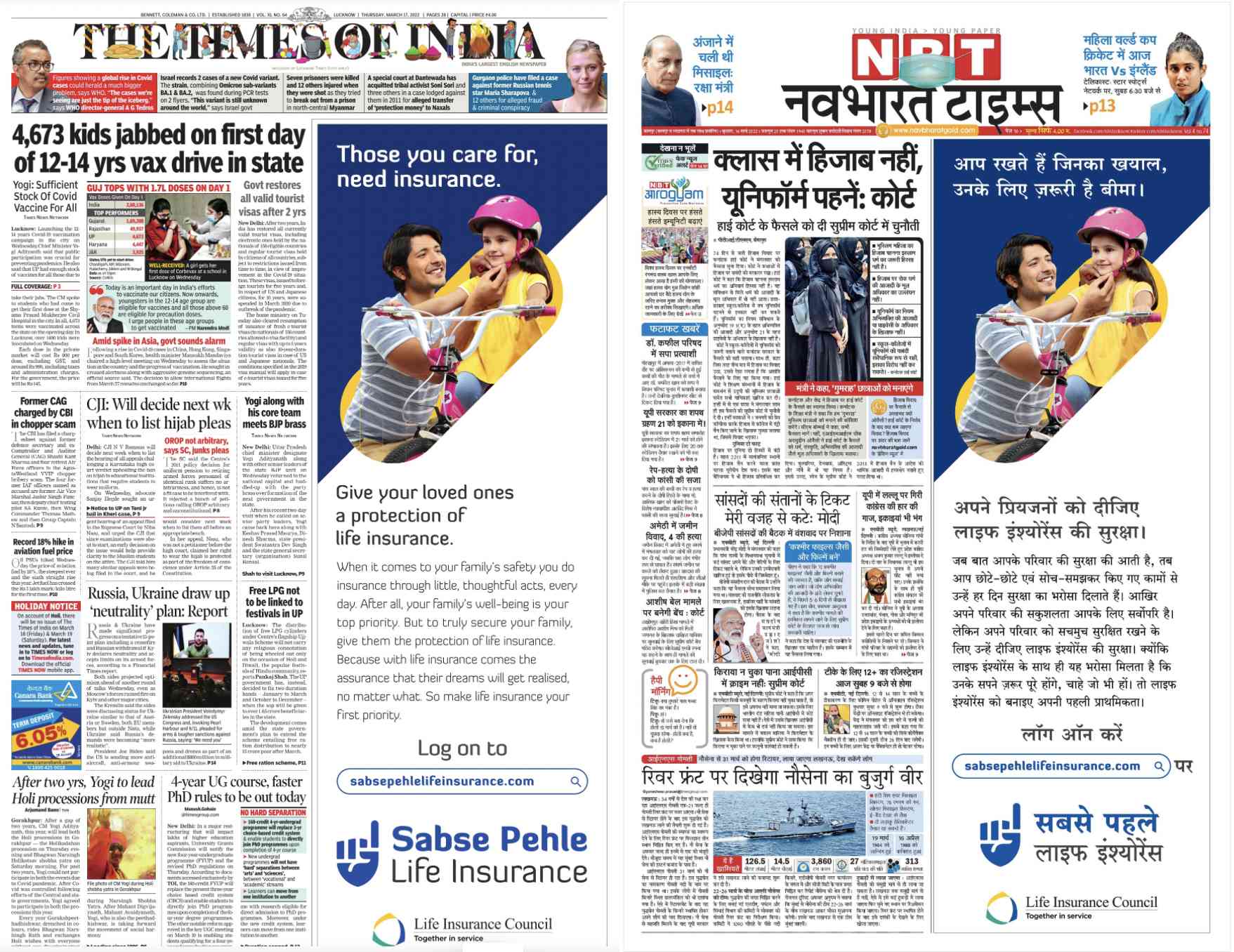
Back in 2017, the Association of Mutual Funds of India (AMFI) launched a campaign for investor awareness and education for the first time in India. The agency was JWT (J Walter Thompson) and the catchphrase was ‘Mutual Funds Sahi Hai’.
Given the enormous media money thrown at this property and the subsequent campaigns by other agencies that retained this slogan, the line has stuck.
On a very similar note, the Life Insurance Council, a federation of 24 life insurance companies in India, launched a campaign in 2019 to generate awareness about life insurance. The campaign was earlier planned as a joint effort between life insurance and general insurance, but eventually, it became a life-insurance-only affair.
The catchphrase for this campaign conceived first by McCann India (and then adapted by other agencies) was ‘Sabse Pehle Life Insurance’.
Besides the similarity of industry bodies launching brand-agnostic campaigns for category education and awareness, there is another unique similarity between both campaigns: it is the use of a Hinglish slogan as the main catchphrase.
‘Mutual Funds Sahi Hai’
‘Sabse Pehle Life Insurance’
Hinglish has been around for a very, very long time in advertising in India. Some famous examples:
‘Yehi hai right choice baby, aha!’
‘Hungry kya?’
‘Yeh dil maange more’
Hinglish is not the use of Hindi in English/Roman script. Hinglish is the mixing of Hindi and English seamlessly to form sentences. Like, ‘She was bhunno-ing the masala-s jub phone ki ghuntee bajee’.
But the most interesting aspect of both these campaigns is the use of languages when you look at the larger picture. You may completely miss this nuance if you do not observe carefully. Let me explain.
Here’s a snapshot of the regional variants of ‘Mutual Funds Sahi Hai’.

And here’s a snapshot of the regional variants of ‘Sabse Pehle Life Insurance’.

Notice anything unique?
For added context, here is another cue: ads for Sabse Pehle Life Insurance in English and regional language newspapers, in 3 cities (Bengaluru, Chennai, and Hyderabad), placed side-by-side.



Or the Lucknow edition of The Times of India and Navbharat Times.

Found anything interesting?
Allow me to articulate it.
In the slogan ‘Mutual Funds Sahi Hai’, ‘Sahi Hai’ is the Hindi part. Likewise, in ‘Sabse Pehle Life Insurance’, ‘Sabse Pehle’ is the Hindi part. This is obvious.
Both JWT and McCann India, when they launched their respective campaigns, had created regional language versions/translations (Hindi is a regional language too, incidentally; just a very large region at that). So, ‘Sahi Hai’ becomes ‘Sariyaanadhu’ in Tamil, for instance. And ‘Sabse Pehle’ becomes ‘Mudhal Velayaa’ in Tamil.
It’s a proper translation, done well across both campaigns.
In the Tamil newspaper (Dinakaran), we notice ‘Mudhal Velayaa’.
But on the same day, in the Chennai edition of The Times of India, what should have been the slogan?
What we know so far:
- They have done regional language variations already; evident on YouTube
- The Times of India, Chennai edition, is an English language newspaper
As per the existing logic:
Option 1: The Times of India Chennai should ideally have ‘Mudhal Velayaa’ as-is. Not in Tamil text, but Tamil written in English script. This is the logic used in the Times of India Lucknow + Navbharat Times ads on March 16th.
Option 2: Given it is an English newspaper, there may be an English version of the slogan’s Hindi element. For example, ‘First things first… Life Insurance’, or ‘First priority… Life Insurance’. The 2nd option features in the body copy too!
But what do you actually see?
It’s simply ‘Sabse Pehle’ written in English/Roman script.
In the Chennai edition on a day when the Tamil newspaper has a Tamil translation.
In the Hyderabad edition on a day when the Telugu newspaper has a Telugu translation.
In the Bengaluru edition on a day when the Kannada newspaper has a Kannada translation.
Did the agency handling ‘Sabse Pehle Life Insurance’ not create an English version of the slogan at all? I know that’s an odd question because half that slogan is already in English. But one-half IS in Hindi but written in English script making it seem like English but is not.
Consequently, ‘Mutual Funds Sahi Hai’ does not have an English version at all.
Were the default slogans created in Hinglish by someone sitting in Mumbai/Delhi presuming ‘We folks baat karte hai like this only’?
And if you notice the regional language versions above, the Hindi version, in particular, you’d realize that the video’s title says ‘Hindi’, but the on-screen text is Hindi written in English script, not in native Devanagari script! But there IS Devanagari in the print ad when it is part of a Hindi newspaper.
Granted – they took a lot of effort in translating it in so many languages, but why not use it too when it matters, in print? Why stick with the Hindi default even in regions where the language is not even secondary in terms of preference (but not in terms of comprehension, of course)?
Also, remember that there is no brand name involved here – life insurance and mutual funds are the categories of products being sold. Under that umbrella, the brands are actually the captions: ‘Mutual Funds Sahi Hai’ and ‘Sabse Pehle Life Insurance’. They are caption/slogan + brand names.
An equivalent: Ghadi Detergent Powder. Ghadi is a Hindi word that has become a product name too. When Ghadi advertises in Tamil Nadu, for instance, they do not change their brand name into Tamil to ‘Kadikaaram’, the Tamil word for clock. Ghadi will remain Ghadi in Tamil too, even though that word’s Tamil meaning is ‘bite’ 🙂
But this logic is not applicable to ‘Mutual Funds Sahi Hai’ and ‘Sabse Pehle Life Insurance’ because they have already showcased their flexibility to offer that product name/slogan in the other equivalents of Hinglish – Tanglish, Teluglish, Marathish, Bengalish, and so on.
And yet, when it comes to an English newspaper’s Tamil Nadu or Karnataka edition, the Hinglish slogan remains! Reason? It’s possible that the creative folks in these agencies saw ‘Mutual Funds Sahi Hai’ and ‘Sabse Pehle Life Insurance’ simply as English slogans and they don’t even realize that it is in Hinglish because this is the language they see, hear all around them.
When it came to creating regional versions, the job was outsourced to a translating agency and it faithfully created Tanglish, Teluglish, Marathish, Bengalish, and more versions. So someone else did realize that it is not truly in English, that there was something that needed localization, and got the job done. But this realization did not happen during the time the brand/slogan was being created (the big creative heads?).
A very, very quirky decision, that!
